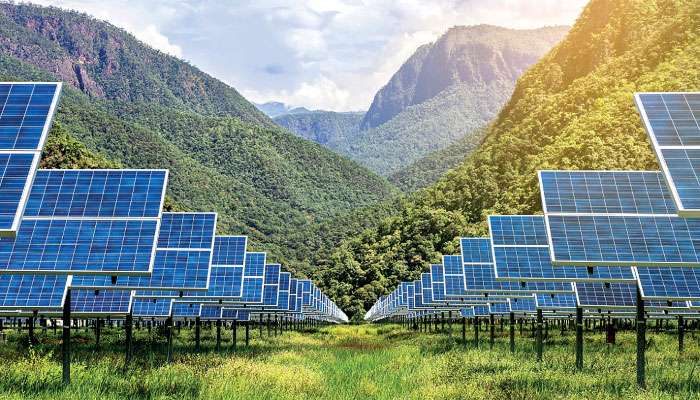Sri Lanka’s renewable energy industry is sounding the alarm. In a dramatic turn, the Federation of Renewable Energy Developers (FRED), along with the National Chamber of Commerce’s Renewable Energy Council, has called for urgent intervention from President Anura Kumara Dissanayake to reverse recently announced feed-in tariff (FiT) cuts. They warn these policy changes could derail the nation’s ambitious green energy targets for 2030.
30% Tariff Cuts Rock the Industry
On June 16, the Cabinet approved a sweeping 30% reduction in feed-in tariffs for solar and other renewable projects. Renewable developers see this as a unilateral move that undermines investor confidence. According to industry leaders, such sudden policy reversals erode trust in Sri Lanka’s energy strategy and put the 70% renewable energy target by 2030 at serious risk.
Adding to the controversy, the decision was made without the legally required approval from the Public Utilities Commission of Sri Lanka (PUCSL), raising concerns over transparency and governance. Developers are demanding that PUCSL assert its role as an independent regulator and review the tariff cuts through proper channels.
The Case for Science-Based Review
FRED is calling for the creation of an independent, science-led review committee to determine future tariffs. Their argument is simple: tariff decisions should rely on transparent, data-driven analysis of grid stability, project costs, and investor impact—not on short-term political calculations.
Industry voices warn that bypassing PUCSL approval undermines checks and balances essential for sustainable energy planning. Without independent review, Sri Lanka risks lurching from one policy swing to another, scaring off investors who need long-term predictability.
Battery Storage Neglect: An Achilles’ Heel
Developers highlight another critical gap in the system: the lack of support for Battery Energy Storage Systems (BESS). Despite clear grid demands, over 1,000 MWh of BESS capacity remains unintegrated. Without storage, daytime solar generation often goes to waste, unable to meet evening or peak-time demand.
High import taxes—duties, para-tariffs, and VAT approaching 50%—make batteries financially unviable for most developers. Industry advocates say Sri Lanka should follow the lead of countries like Vietnam and Singapore by offering tax relief to accelerate BESS deployment and improve grid flexibility.
CEB’s Curtailments: Breaking PPAs and Breaking Trust
Since the nationwide blackout in February, the Ceylon Electricity Board (CEB) has frequently curtailed solar plant output on Sundays and public holidays, claiming low demand. These actions, however, violate long-standing Power Purchase Agreements (PPAs) with renewable producers.
Developers estimate that up to 14 million units of clean energy have been lost over 18 Sundays and nine holidays of curtailment. This lost output translates to significant revenue hits, with roughly 75% of projects now barely profitable or outright losing money. Many developers are warning of looming debt defaults and insolvencies if this trend continues.
Financial Crisis Looms for Green Projects

Sri Lanka’s broader economic challenges have only deepened the crisis in renewables. High inflation, soaring interest rates, and delayed payments from CEB have squeezed developers’ cash flows. Many projects that looked financially sound on paper are now at risk of collapse.
Industry leaders fear a wave of loan defaults, with banks potentially forced to seize renewable assets. Such a collapse would not only undermine Sri Lanka’s energy transition goals but also hurt investor sentiment across the broader economy.
Structural Reform for Energy Security
Beyond tariffs and battery storage, industry experts point to deeper structural flaws. Sri Lanka’s grid needs modernization, including automation, redundancy, and better technology to handle the variability of renewables.
Sri Lankan households and businesses currently spend billions of dollars annually on fossil fuel imports. By building a more robust renewable ecosystem—including improved storage—this outflow of foreign exchange could be dramatically reduced, strengthening the country’s financial resilience.
Sri Lanka already generates over 2,000 MW of non-traditional renewable energy, saving hundreds of millions of dollars in foreign exchange every year. Much of this capacity was driven by feed-in tariff incentives. Developers warn that cutting tariffs now will stall this momentum, especially for small-scale rooftop solar projects that support homes, schools, and SMEs.
FRED’s Call to Action: Presidential Intervention
FRED has formally asked President Dissanayake to intervene and lead a science-based review of feed-in tariffs. Their recommendations include:
- Restoring tariff stability with clear, transparent review processes.
- Empowering PUCSL to carry out its role as an independent regulator.
- Offering tax relief on battery imports to accelerate BESS adoption.
- Ensuring CEB respects existing PPAs and minimizes illegal curtailments.
- Coordinating Treasury and Power Ministry policies to maintain investor confidence.
- Developing a structured, long-term procurement strategy with FiTs as a primary tool.
Developers argue these reforms are essential to attract international capital, create local jobs, and secure Sri Lanka’s energy future.
Why It Matters: The Road to 2030 and Beyond
Sri Lanka has committed to sourcing 70% of its electricity from renewables by 2030. Meeting this target isn’t optional; it’s essential for reducing carbon emissions, limiting foreign exchange spending on fuel, and improving energy security.
But these goals hinge on investor confidence. Renewable projects typically require 15- to 20-year financing commitments. If policy decisions become unpredictable—like sudden tariff cuts or ignored PPAs—investors will simply look elsewhere.
This is especially critical for small-scale players: the entrepreneurs, rooftop solar installers, and SMEs who depend on reliable tariff agreements to justify their investments. Undermining FiTs threatens not only large-scale energy producers but the entire ecosystem that brings clean power to Sri Lankan homes and businesses.
Key Takeaways
- Tariff Cuts: 30% across-the-board reductions threaten the viability of existing and planned projects.
- Regulatory Bypass: Skipping PUCSL approval damages transparency and legal certainty.
- Storage Impasse: High taxes on battery imports cripple grid flexibility.
- Curtailment Chaos: Violating PPAs erodes trust and disrupts developer cash flows.
- Financial Fallout: Policy instability compounds economic stress, risking sector-wide defaults.
- Need for Reform: Comprehensive upgrades to the grid, policy, and procurement strategy are essential.
A “Win‑Win” Path
Sri Lanka has immense renewable energy potential. With consistent, science-based policies, tax reforms for BESS, PUCSL empowerment, and grid modernization, the country can attract global investors and deliver reliable, affordable, green power to its people.
FRED’s appeal is ultimately a call for stability, transparency, and strategic thinking. With strong leadership and clear reform, Sri Lanka can turn a looming crisis into an opportunity to become a true green energy leader in South Asia.





